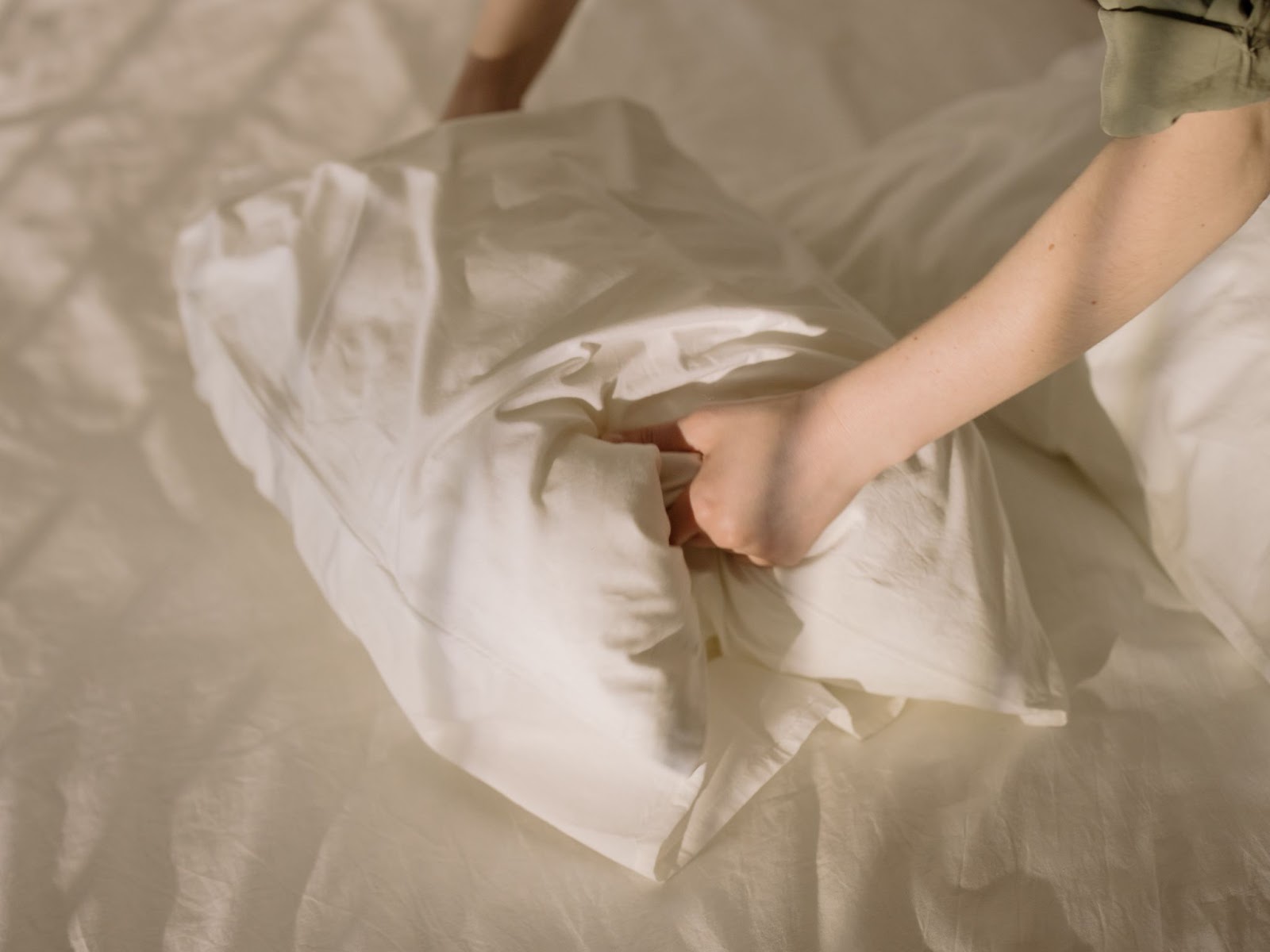While you certainly have a routine for washing your linens and pillowcases during house cleaning in Sacramento, you might not give your pillows and mattress as much thought. But at least twice a year, both require deep cleaning.
The pillow accumulates hair, dead skin cells, sweat, and drool over time. All that filth is essentially what dust mites prefer to consume, which raises the possibility that being around them will cause an allergic reaction in you. Adding a pillow to your or your housekeeper’s cleaning list should be a must. To keep a lot of the yucky stuff out and increase the lifespan of your pillow, you might also want to spend money on a pillow protector.
- Air It Out
Daily fluffing will help your pillows regain their shape and get rid of dust. Then, for a few hours every month or so, hang them outside on a clothesline. Ideally, do this on a sunny, windy day. Run the foam and latex pillows through the dryer on the no-heat cycle if that is not an option, as with some of these pillows.
- Gently wash it
If your pillow can tolerate washing, you should do so at least twice a year, or more frequently if you tend to perspire heavily, eat in bed, or have pets sleep with you at night.
A pillow can take some time to dry after washing, but it’s not particularly difficult to do so.
Before throwing it in the washer, spot-treat the pillowcase and the pillow with a stain cleaner that is designed to handle that kind of stain if your pillow has a wet stain that you’re trying to get out (The same trick works for getting stains out of a mattress.)
Wash two pillows at once if your washing machine has adequate space for them. By balancing the load, the water and detergent will be able to circulate more efficiently. It’s recommended to simply agitate on the mild cycle for a short while (or the shortest setting, if you can’t manage the time), as the agitator on typical top-loaders may be rough on pillows. Alternatively, you might go to the laundry specifically to use its front-loaders.
For particular kinds of pillow fills, adhere to the following instructions:
• Feather or down: The majority of down pillows can be washed in a washing machine.
However, use lukewarm water, a gentle detergent, and then air dry. (The down may become damaged by high temperatures.)
• Memory foam or latex pillows will probably need to be hand-washed because washer agitation can break the foam. Dust the pillow with a vacuum cleaner, then use a moist cloth and a tiny amount of mild detergent to spot clean. For air drying, lay the cushion flat.
• Buckwheat hulls: Pour the buckwheat filling onto a sizable baking sheet or shallow, wide basin. Both the buckwheat and the shell casing should be washed with cold water and a little detergent to get rid of any odors.
- Completely dry it.
It’s essential to properly dry the pillow to avoid mildew. Avoid using your dryer’s auto-dry setting because the sensors will only pick up surface moisture, leaving you with a pillow that is still damp within.
Instead, many pillows can be dried on moderate heat for a good hour. A few dry towels will hasten the process. Two new tennis balls or dryer balls can be added, and as they bounce about the drum, they will prevent the filling from clumping.
However, to prevent clumps from forming when drying down or feather pillows, use the no-heat air-dry mode (it will take some time).
Most pillows can be dried completely by hanging them on the clothesline if the weather is mild. Regardless of the drying method you use, you must still examine the pillow for moisture.
Keep it fresh and clean
To keep pillows free of contaminants like sweat, body oils, and face cream, we advise using pillow covers. Wash your linens and the pillowcase and cover them on a regular basis during your deep cleaning schedule, like once a week, or ask your housekeeper to do it during your house cleaning in Los Angeles or maid service in Los Angeles.




